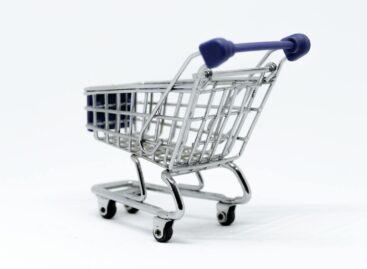Accelerating inflation in Hungary: brutal food price hikes and measures of questionable effectiveness
Inflation in Hungary accelerated again in February 2025: consumer prices were 5.6% higher on average than a year earlier. The price increase particularly affected basic foodstuffs, with prices of several products rising dramatically. The government is responding to the inflation wave with new measures, but the effectiveness of margin restrictions remains questionable – Pénzcentrum’s article points out.
Which foodstuffs have become the most expensive?
 According to the latest data, the following staple foods have seen the highest annual price increases:
According to the latest data, the following staple foods have seen the highest annual price increases:
- UHT long-life milk (+58%) – 319 HUF → 504 HUF
- Fine flour (+52.8%) – 178 HUF → 272 HUF
- Ground coffee (+38.2%) – 1310 HUF → 1810 HUF
- 100% orange juice (+34.4%) – 863 HUF → 1160 HUF
- Sunflower cooking oil (+30.8%) – 647 HUF → 846 HUF
- Head cabbage (+29.1%)
- Chicken breast fillet (+25.8%) – 2390 HUF/kg
- Eggs (10 pcs) (+25.6%) – 739 HUF → 928 HUF
- Cucumbers (+23.8%)
- White wine, without geographical indication (+22.8%)
In addition to the increase in the price of daily consumer goods, some non-food products, such as wedding rings (+17.2%) and printed press products (Nemzeti Sport +16.4%) also showed a significant price increase.
A severe price shock occurred even in one month
There was a spectacular price increase not only on an annual basis, but also in a single month. The biggest losers of the February price increase:
- Cocoa powder (+13.9%) – 8060 HUF/kg → 9180 HUF/kg
- Nemzeti Sport newspaper (+11.4%) – 350 HUF → 390 HUF
- Green peppers (+10.8%)
- Cucumbers (+8.8%)
- Ground coffee (+8.4%)
- White wine (+7.5%)
- Sunflower cooking oil (+6.7%)
The average monthly price increase was 0.8%, but some products showed an exceptionally high price increase, which clearly indicates the acceleration of inflation.
In response to rising prices, the government announced a new intervention in mid-March: it will maximize retail margins on 30 basic food items until the end of May. The measure is intended to prevent further price increases for the most important foods, but experts say this tool may have limited effectiveness.
Related news
The Hungarian Confederation of Economic Workers also spoke out regarding the inflation data
🎧 Hallgasd a cikket: Lejátszás Szünet Folytatás Leállítás Nyelv: Auto…
Read more >Cheese prices may rise: semi-hard varieties are exempt from margin restrictions
🎧 Hallgasd a cikket: Lejátszás Szünet Folytatás Leállítás Nyelv: Auto…
Read more >K&H: what does child inflation show?
🎧 Hallgasd a cikket: Lejátszás Szünet Folytatás Leállítás Nyelv: Auto…
Read more >Related news
Christmas shock in commerce: for the first time, we can pay with bank cards in fewer places
🎧 Hallgasd a cikket: Lejátszás Szünet Folytatás Leállítás Nyelv: Auto…
Read more >Hungarian Confectionery Manufacturers Association: trends in 2025 and prospects for 2026
🎧 Hallgasd a cikket: Lejátszás Szünet Folytatás Leállítás Nyelv: Auto…
Read more >Most grocery chains will be open until noon on December 24th
🎧 Hallgasd a cikket: Lejátszás Szünet Folytatás Leállítás Nyelv: Auto…
Read more >






